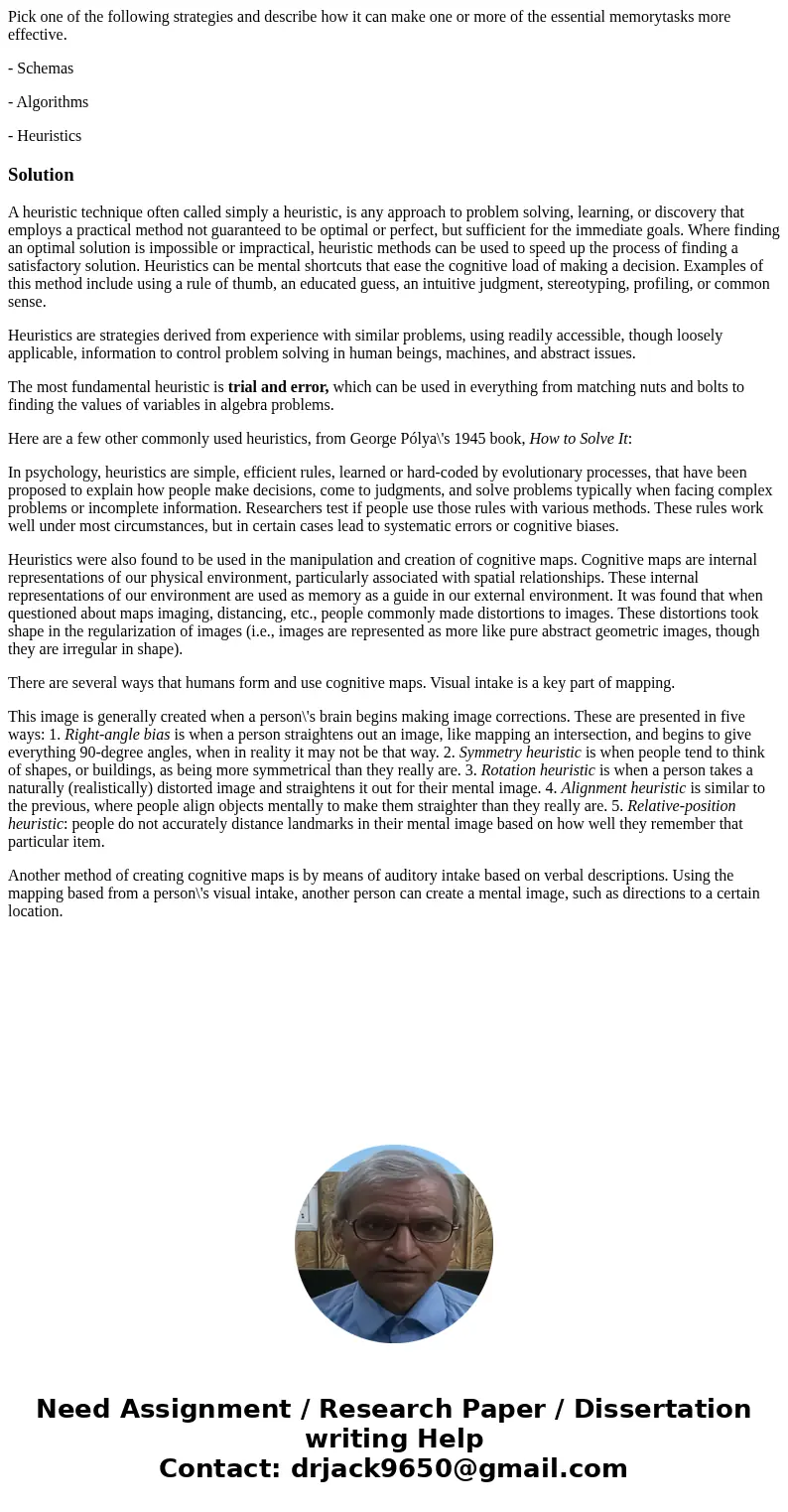Pick one of the following strategies and describe how it can
Pick one of the following strategies and describe how it can make one or more of the essential memorytasks more effective.
- Schemas
- Algorithms
- Heuristics
Solution
A heuristic technique often called simply a heuristic, is any approach to problem solving, learning, or discovery that employs a practical method not guaranteed to be optimal or perfect, but sufficient for the immediate goals. Where finding an optimal solution is impossible or impractical, heuristic methods can be used to speed up the process of finding a satisfactory solution. Heuristics can be mental shortcuts that ease the cognitive load of making a decision. Examples of this method include using a rule of thumb, an educated guess, an intuitive judgment, stereotyping, profiling, or common sense.
Heuristics are strategies derived from experience with similar problems, using readily accessible, though loosely applicable, information to control problem solving in human beings, machines, and abstract issues.
The most fundamental heuristic is trial and error, which can be used in everything from matching nuts and bolts to finding the values of variables in algebra problems.
Here are a few other commonly used heuristics, from George Pólya\'s 1945 book, How to Solve It:
In psychology, heuristics are simple, efficient rules, learned or hard-coded by evolutionary processes, that have been proposed to explain how people make decisions, come to judgments, and solve problems typically when facing complex problems or incomplete information. Researchers test if people use those rules with various methods. These rules work well under most circumstances, but in certain cases lead to systematic errors or cognitive biases.
Heuristics were also found to be used in the manipulation and creation of cognitive maps. Cognitive maps are internal representations of our physical environment, particularly associated with spatial relationships. These internal representations of our environment are used as memory as a guide in our external environment. It was found that when questioned about maps imaging, distancing, etc., people commonly made distortions to images. These distortions took shape in the regularization of images (i.e., images are represented as more like pure abstract geometric images, though they are irregular in shape).
There are several ways that humans form and use cognitive maps. Visual intake is a key part of mapping.
This image is generally created when a person\'s brain begins making image corrections. These are presented in five ways: 1. Right-angle bias is when a person straightens out an image, like mapping an intersection, and begins to give everything 90-degree angles, when in reality it may not be that way. 2. Symmetry heuristic is when people tend to think of shapes, or buildings, as being more symmetrical than they really are. 3. Rotation heuristic is when a person takes a naturally (realistically) distorted image and straightens it out for their mental image. 4. Alignment heuristic is similar to the previous, where people align objects mentally to make them straighter than they really are. 5. Relative-position heuristic: people do not accurately distance landmarks in their mental image based on how well they remember that particular item.
Another method of creating cognitive maps is by means of auditory intake based on verbal descriptions. Using the mapping based from a person\'s visual intake, another person can create a mental image, such as directions to a certain location.

 Homework Sourse
Homework Sourse